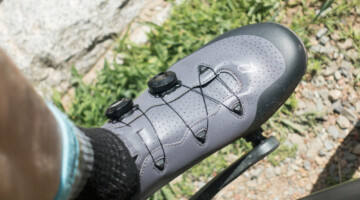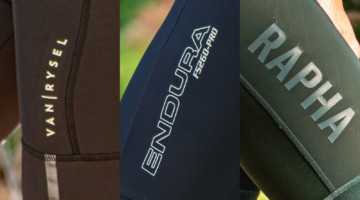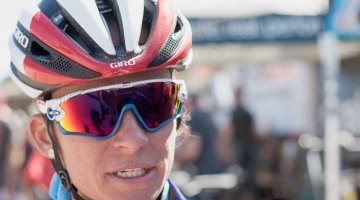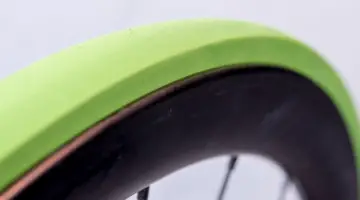If you travel around the Mid-Atlantic, watching the big masters’ races, you’ll likely see Kelly Cline, donning the Revolution Wheelworks Racing kit, near the front of the race. Not only does Cline make his presence known during the race, he has is signature all over cyclocross before the first whistle sounds. As the MAC Technical Director, he’s responsible for the course design and management, including several of the earliest UCI races of the season.
Michelle Lee’s Interview with MAC Technical Director, Kelly Cline:
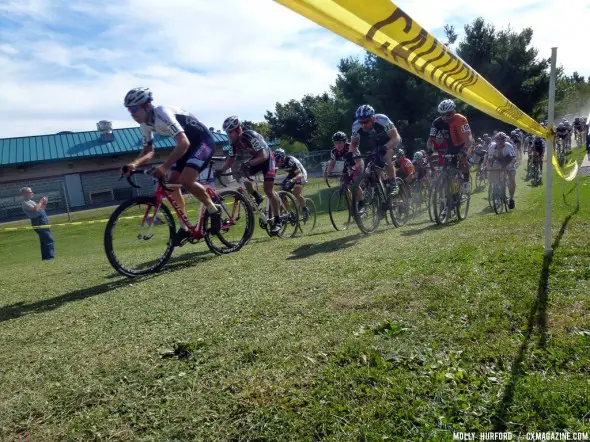
The Nittany Cyclocross race has been one of the earliest UCI races every season. © Cyclocross Magazine
1. What is your favorite MAC course of all time and why?
Great question! For me, this doesn’t take much thought. My favorite MAC course of all time is the Beacon Cross course in Bridgeton, NJ, designed by veteran of the sport, Wade Hess. The Beacon Cross course is like no other cross course in the country. It is unique in that it is comprised mostly of loose sandy fire roads. Some other notable features are the beach run which is one of the longest of its kind. And of course, there is the Amphitheater of Pain which has 5 or 6 (not-so-legal) hypoxia inducing step-ups. The start/finish is on a nicely paved slightly uphill section of road which has allowed for some very exciting sprint finishes in the past. This race course is still on the east coast calendar and is part of the New Jersey Bicycle Association CX Cup. I highly recommend checking this course out in the future.
2. Can you walk us through your process of designing a course? What do you think about first? How much happens ahead of time, and how much happens as the tape is going up? What do you try to prioritize or keep in mind?
In 2001, I had the opportunity to witness preeminent course designer, Tom Stevens, laying out the National Championships course at Patterson Park in Baltimore, MD. It was a little strange at first as I watched. Tom was walking around with his arms out like he was a little kid pretending to fly a plane going up and down and side to side all around the grassy hills. Well, as soon as I figured out what he was doing, it all made perfect sense to me. Tom was visualizing. He was being the racer, trying to sense the flow of the course he secretly laid out in his head.
Fast forward 2-years, in the spring of 2003 I found myself on a beautifully groomed city park in Blue Bell, PA called Prophecy Creek visualizing, or “flying around”, on what would be my first UCI sanctioned race course later that fall. But before heading out to walk the venue, I found an aerial photo online of the park. Having a bird’s eye view helps not only with the course layout, but with everything else involved such as determining boundaries, parking, registration, pit area, port-o-potty locations, etc. For me, the visualization process takes several visits to a site. Those visits are sometimes on foot and sometimes on my cross bike. And then once a general layout is conceived, I put it on paper. With that, you can identify the locations of any man-made or natural obstacles as well as estimate the number of posts and amount of course tape that is needed.
Generally, a 3k course can use over well 500 posts and 20 to 25 thousand feet of course tape. The actual course setup usually starts a few days before the event. Posts are stepped in, barriers are installed and the pit is laid out. Once the posts are in, it’s time to get out and ride. This gives you a perfect opportunity to tweak corners and make fine adjustments to the flow. Something to keep in mind is the weather. Your planned course may have to change on the day of the event due to flooding (e.g., 2013 Worlds in Louisville, KY), heavy snow and ice, etc. The best advice is to expect and plan for the unexpected.
3. How can courses improve from year to year? Can you tell us about a time when you designed a course one way, but then changed it the next day or next year?
If you are fortunate enough to work with the same venue year after year, you eventually learn what works and what doesn’t. I always found it helpful to visit the venue in early spring and take a fresh look to see if there are any new features. Often, depending on the venue, you might see downed trees, or areas that were washed out over the winter, or there may be a parking lot where your sand pit used to be. With that said, always be conscious about what’s going on at your venue during the other 364 days of the year. Also, the course designer should watch the races, the first race to the last race. Pay attention to bottlenecks and changing conditions. You might see that there is a crash at the start of each race in the same location. You might learn that by moving a section of fencing by only a few inches might prevent those crashes.
4. What are some common pitfalls that you see in course design?
The most common pitfall in course design that I have seen in the Mid-Atlantic region is not considering spectator flow and racer movement to and from the equipment pits. Too often I see that “you can’t get there from here” without hopping over some course tape. A well-designed course will have logically located spectator course crossings and a clearly identified route to the equipment pits for the racers. Some other common pitfalls may be that a course isn’t wide enough in certain areas, or a particular turn may not have the posts placed well causing them to get knocked down each lap. If there is a trouble area such as this, you may want to consider laying it out differently.
5. Once the race starts, can a promoter do anything to make for a better race course?
Paying attention to flapping course tape, seeing if there are too many pile-ups in the same place, checking the sand pit or transition areas, anything like that?
A responsible promoter will have sufficient personnel located around the course watching out for downed posts and course tape, as well as keeping an eye out for accidents and injuries. Often the officials will have radio communication with the promoting staff and will point out issues that need addressing as they happen.
6. Does a racer have any role in improving our courses? What can racers do?
Absolutely. As a promoter, you need to listen to your paying customers. If you are a racer and have a comment or suggestion, don’t hesitate to bring it up to the promoter or an official. Unfortunately, things sometimes get overlooked. It’s always great to have all of those eyes of the racers out there looking out for you.
7. Anything else you’d like to add?
Promoting can sometimes feel like a thankless job. At your next cyclocross race, take a few minutes to thank the promoter and his/her staff, the officials and any vendors that might be there. They will appreciate it!
Kelly Cline’s Cyclocross Resume:
2000 PA State Championships at Belmont Plateau
2003 UCI C2 at Prophecy Creek in Blue Bell, PA
2004 UCI C2 at Belmont Plateau
2005 thru 2009 UCI C2 at Ludwig’s Corner, PA
MAC Technical Director from 2006 thru Present























